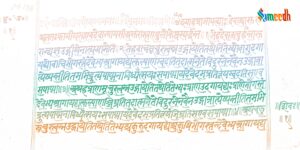Mahatmyas refer to sections or chapters that extol the greatness and sanctity of certain places, deities, rivers, or rituals. These narratives emphasize the divine significance and the spiritual merit associated with specific locations or practices. The term “Mahatmya” itself can be translated as “glorification” or “greatness.”

Mahatmyas often narrate mythological stories, legends, and historical events to illustrate the sacredness of a particular site or the efficacy of a particular religious observance. These stories aim to inspire faith and devotion among the readers or listeners. Pilgrims often visit these sacred places based on the belief that doing so will bring spiritual benefits.
Here are a few common types of Mahatmyas found in various Puranas, including the Skanda Puran:
- Tirtha Mahatmya: Describes the sanctity and significance of pilgrimage sites (tirthas). These could be rivers, lakes, mountains, temples, or other sacred locations.
- Kshetra Mahatmya: Similar to Tirtha Mahatmya, but specifically focuses on the greatness of holy lands or regions associated with the divine.
- Deva Mahatmya: Highlights the glories and greatness of specific deities. These sections often contain stories related to the birth, exploits, and miracles of the deity, emphasizing their divine attributes.
- Vrata Mahatmya: Expounds on the virtues of religious observances or rituals (vratas). These may include fasting, prayers, and other devotional practices performed on specific occasions or during particular periods.
- Jnana Mahatmya: Focuses on the significance of knowledge and wisdom, often imparted by sages or enlightened beings.
In the Skanda Purana, Mahatmyas play a significant role. Devotees often turn to these sections for guidance on pilgrimage, rituals, and devotional practices, believing that by following the prescribed activities, they can attain spiritual merit and divine blessings. The narratives within Mahatmyas contribute to the rich tapestry of mythology, philosophy, and religious practices within the Puranic tradition.